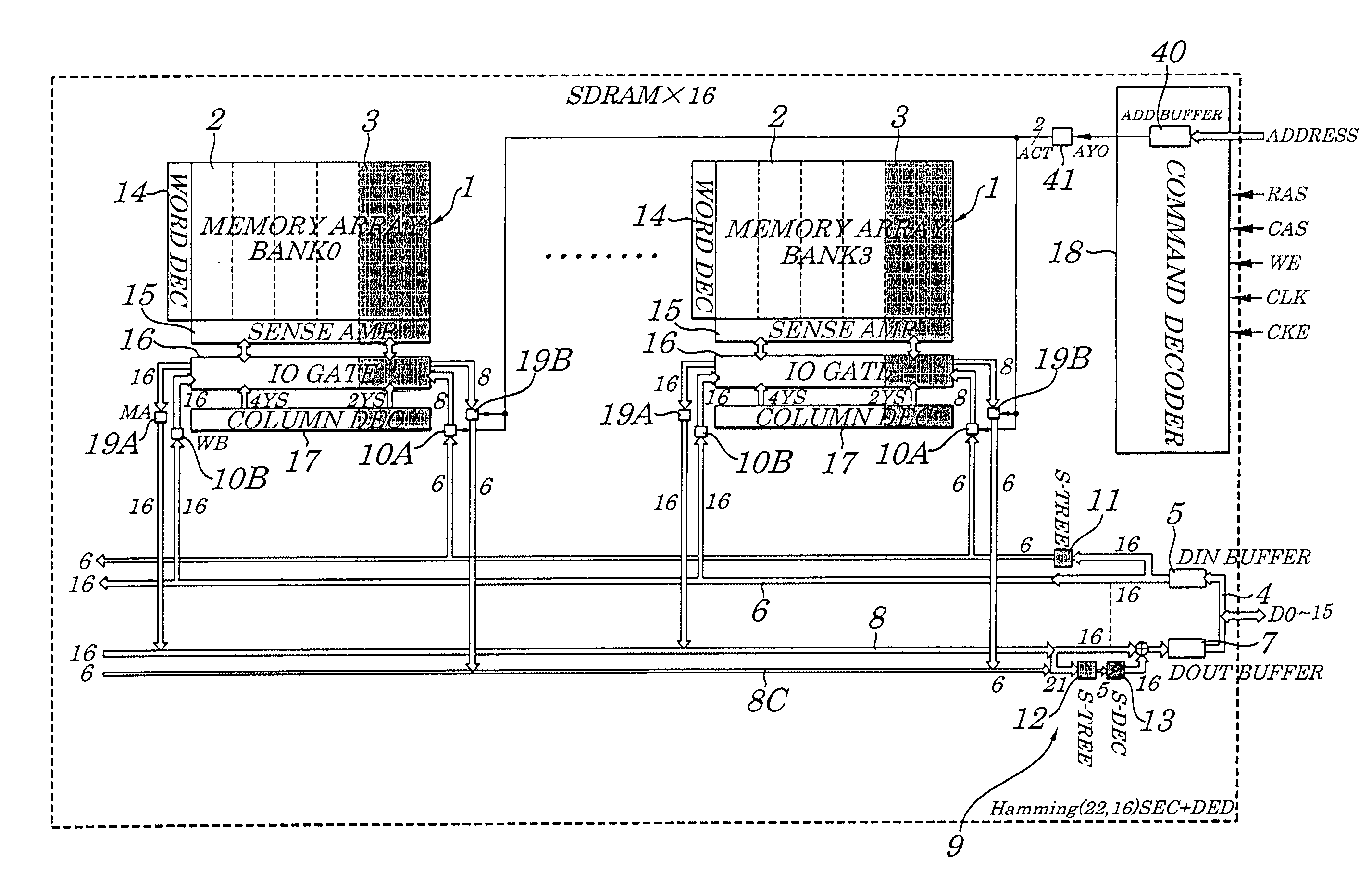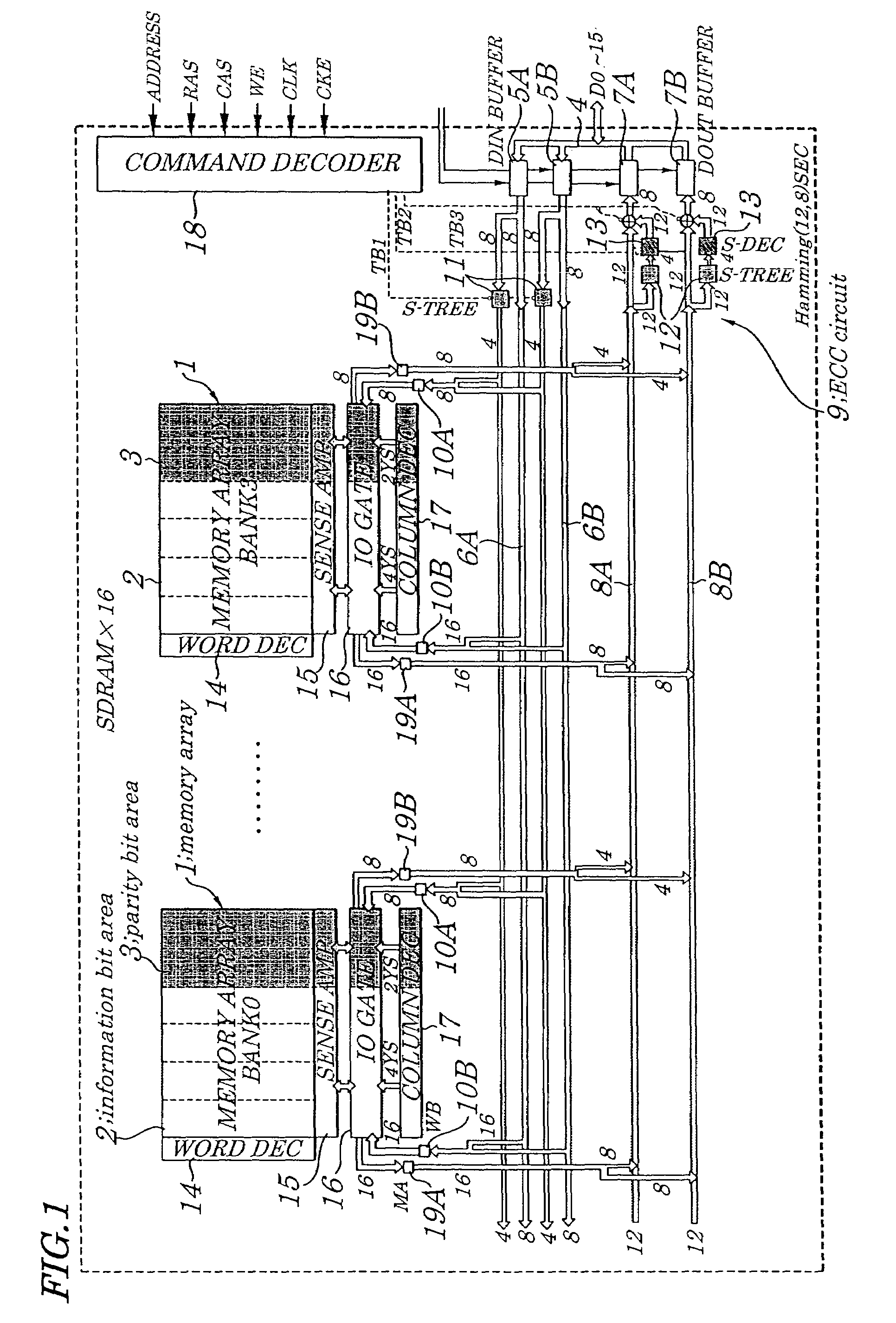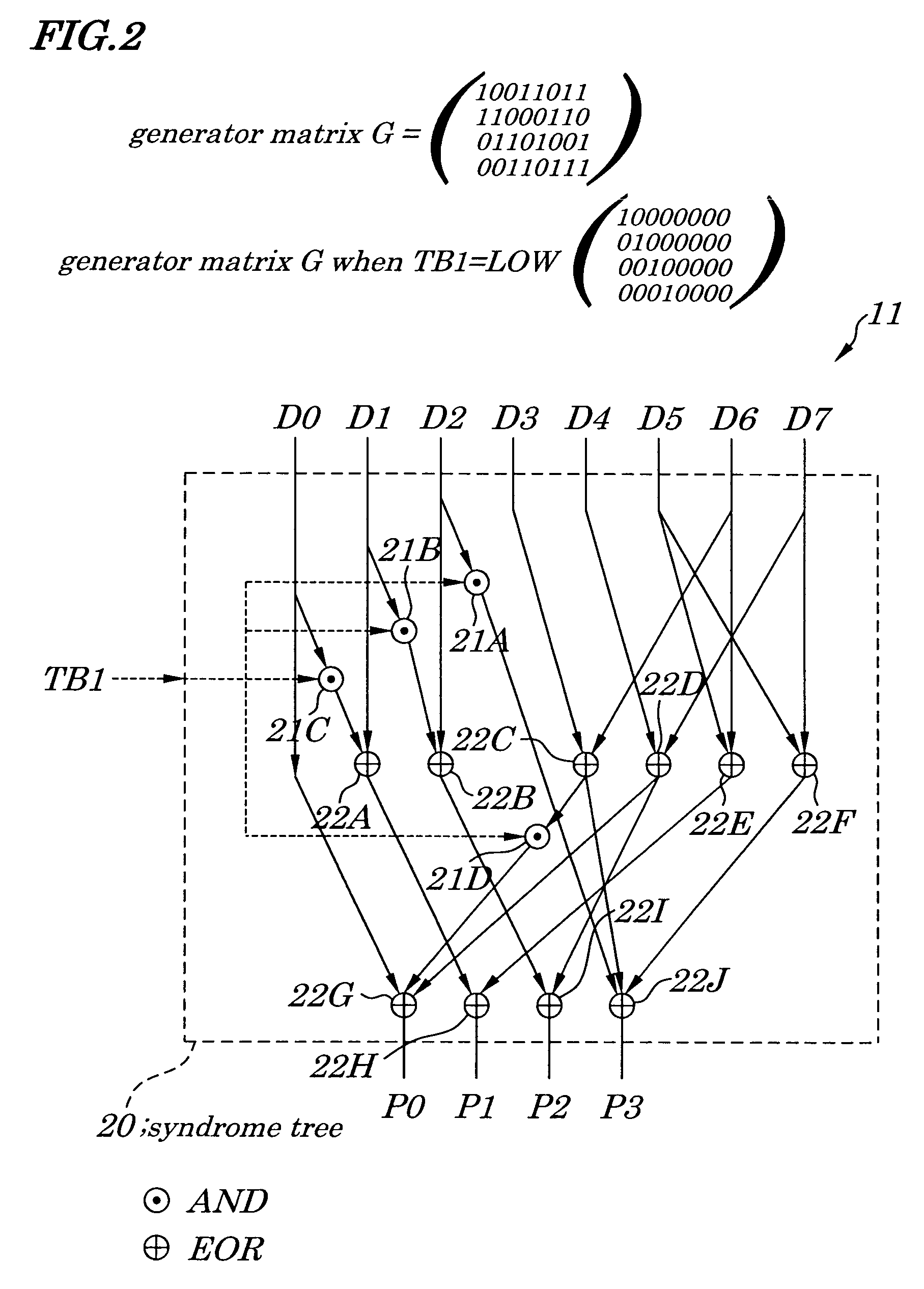Semiconductor memory device provided with error correcting code circuitry
a memory device and error correction technology, applied in the field of semiconductor memory devices, can solve the problems of inability to transmit information error inevitably in part of information bits, and inability to efficiently improve and correct pause refresh tail distribution, so as to reduce data holding current, reduce error rate, and efficiently correct bits
- Summary
- Abstract
- Description
- Claims
- Application Information
AI Technical Summary
Benefits of technology
Problems solved by technology
Method used
Image
Examples
first embodiment
[0053]FIG. 1 is a schematic block diagram showing configurations of a semiconductor memory device according to a first embodiment of the present invention. FIG. 2 is a diagram for showing configuration of an encoding circuit 11 of the semiconductor memory device according to the first embodiment, FIG. 3 is a diagram for showing configuration of a decoding circuit 12 of the same semiconductor memory device, and FIG. 4 is a diagram for showing configuration of an error correcting circuit 13 of the same semiconductor memory device. Configurations of the semiconductor memory device of the first embodiment are described by referring to FIG. 1 to FIG. 4. The semiconductor memory device of the first embodiment, as shown in FIG. 1, is made up of a 16-bit SDRAM having a Hamming Code (12, 8)SEC, which includes memory arrays (MEMORY ARRAY) 1 made up of a plurality of memory cells and divided into four banks (first BANK0 to fourth BANK3) each containing an information bit area 2 and a parity bi...
second embodiment
[0071]FIG. 5 is a diagram for showing configurations of a semiconductor memory device according to a second embodiment of the present invention. FIG. 6 is a diagram showing configurations of an encoding circuit 11 of the semiconductor memory device according to the second embodiment. FIG. 7 is a diagram showing configurations of a decoding circuit 12 of the semiconductor memory device according to the second embodiment. Configurations of the semiconductor memory device of the second embodiment differ greatly from those of the semiconductor memory device of the first embodiment in that, in a 16-bit SDRAM having a Hamming Code (12, 8) SEC, use of a test signal is made unnecessary and output bus lines to output information bits read from a memory array are separated from output bus lines to output parity bits read from the memory array. In the semiconductor memory device of the second embodiment, as shown in FIG. 5, output bus lines 31A and 31B to divide 16 bits of information bits rea...
third embodiment
[0077]FIG. 8 is a diagram showing configurations of a semiconductor memory device according to a third embodiment of the present invention. Configurations of the semiconductor memory device of the third embodiment differ greatly from those of the above first embodiment in that a 16-bit SDRAM has a Hamming Code (21, 16).
[0078]The semiconductor memory device of the third embodiment, as shown in FIG. 8, includes an input bus line 6 to input 16 bits of information bits which are input and output through an input / output data bus 4 through an input buffer 5, an output bus line 8 to output 16 bits of information bits read from a memory array 1, an output bus line 8C to output 5 bits of parity bits read from the memory array 1, and an ECC circuit 9 placed on the input bus line 6 and output bus lines 8 and 8C. Moreover, the semiconductor memory device of the third embodiment is not so configured as to comply with specifications of DQM (Data Mask signal) and has an address controlling circuit...
PUM
 Login to View More
Login to View More Abstract
Description
Claims
Application Information
 Login to View More
Login to View More - R&D
- Intellectual Property
- Life Sciences
- Materials
- Tech Scout
- Unparalleled Data Quality
- Higher Quality Content
- 60% Fewer Hallucinations
Browse by: Latest US Patents, China's latest patents, Technical Efficacy Thesaurus, Application Domain, Technology Topic, Popular Technical Reports.
© 2025 PatSnap. All rights reserved.Legal|Privacy policy|Modern Slavery Act Transparency Statement|Sitemap|About US| Contact US: help@patsnap.com



